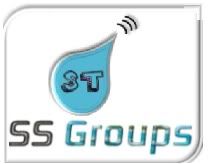Windows, in computer science, personal computer operating system sold by Microsoft Corporation that allows users to enter commands with a point-and-click device, such as a mouse, instead of a keyboard. An operating system is a set of programs that control the basic functions of a computer. The Windows operating system provides users with a graphical user interface (GUI), which allows them to manipulate small pictures, called icons, on the computer screen to issue commands. Windows is the most widely used operating system in the world. It is an extension of and replacement for Microsoft’s Disk Operating System (MS-DOS).
The Windows GUI is designed to be a natural, or intuitive, work environment for the user. With Windows, the user can move a cursor around on the computer screen with a mouse. By pointing the cursor at icons and clicking buttons on the mouse, the user can issue commands to the computer to perform an action, such as starting a program, accessing a data file, or copying a data file. Other commands can be reached through pull-down or click-on menu items. The computer displays the active area in which the user is working as a window on the computer screen. The currently active window may overlap with other previously active windows that remain open on the screen. This type of GUI is said to include WIMP features: windows, icons, menus, and pointing device (such as a mouse).
Computer scientists at the Xerox Corporation’s Palo Alto Research Center (PARC) invented the GUI concept in the early 1970s, but this innovation was not an immediate commercial success. In 1983 Apple Computer featured a GUI in its Lisa computer. This GUI was updated and improved in its Macintosh computer, introduced in 1984.
Microsoft began its development of a GUI in 1983 as an extension of its MS-DOS operating system. Microsoft’s Windows version 1.0 first appeared in 1985. In this version, the windows were tiled, or presented next to each other rather than overlapping. Windows version 2.0, introduced in 1987, was designed to resemble IBM’s OS/2 Presentation Manager, another GUI operating system. Windows version 2.0 included the overlapping window feature. The more powerful version 3.0 of Windows, introduced in 1990, and subsequent versions 3.1 and 3.11 rapidly made Windows the market leader in operating systems for personal computers, in part because it was prepackaged on new personal computers. It also became the favored platform for software development.
In 1993 Microsoft introduced Windows NT (New Technology). The Windows NT operating system offers 32-bit multitasking, which gives a computer the ability to run several programs simultaneously, or in parallel, at high speed. This operating system competes with IBM’s OS/2 as a platform for the intensive, high-end, networked computing environments found in many businesses.
In 1995 Microsoft released a new version of Windows for personal computers called Windows 95. Windows 95 had a sleeker and simpler GUI than previous versions. It also offered 32-bit processing, efficient multitasking, network connections, and Internet access. Windows 98, released in 1998, improved upon Windows 95.
In 1996 Microsoft debuted Windows CE, a scaled-down version of the Microsoft Windows platform designed for use with handheld personal computers. Windows 2000, released at the end of 1999, combined Windows NT technology with the Windows 98 graphical user interface. In 2000 a special edition of Windows known as Windows Millenium Edition, or Windows ME, provided a more stable version of the Windows 98 interface. In 2001 Microsoft released a new operating system known as Windows XP, the company’s first operating system for consumers that was not based on MS-DOS.
Other popular operating systems include the Macintosh System (Mac OS) from Apple Inc., OS/2 Warp from IBM (see OS/2), and UNIX and its variations, such as Linux.
CHILLAPPLE Group International with SUPER SOFTWARE & SUPER TECHNOLOGY Group - A Joint Venture - Free Technology Update is a new blog on blogger blogspot provides frequent updates and latest happenings in the field of technology along with tech reviews, news and rumors. Technology Update | Technology Updates brings latest Technology News related to Computers, Softwares, Mobiles, Facebook, MySpace, Google, Microsoft,
Subscribe via email
Recent Posts
Manufacturers
Sponsor
Archives
- December 2010 (3)
- September 2010 (17)
- August 2010 (9)
- July 2010 (65)
- June 2010 (60)
- May 2010 (221)
- April 2010 (29)
- January 2010 (114)
- December 2009 (18)
- November 2009 (59)
- October 2009 (44)
- September 2009 (50)
Products
Our network

CHILLAPPLE Technology Updates by CHILLAPPLE Groups is licensed under a Creative Commons Attribution-ShareAlike 3.0 Unported License.
Based on a work at superstechnology.blogspot.com.
3d
a
acer
Apple
ar
asus
b
benq
blackberry
c
canon
cellphone
computer basics
d
dell
digital camera
e
external
f
FireFox
g
Games
Gigabyte
google
guest-post
h
Honda
hp
i
Intel
internet
iphone
ipods
l
laptops
lcd
lenovo
lg
linux
m
make money
Microsoft
monior-analysis download
monitors
motorola
multimedia downloads
n
netbook
nokia
notebook
p
Panasonic
Philips
Play Station
pmp
portable
Projectors
s
samsung
smartbook
smartphone
sony
sony ericsson
t
tablet
Technology
toshiba
touch screen
u
USB Hub
v
viliv
w
webcams
windows
Followers
Credits
| This Site CHILL APPLE TECHNOLOGY Wing has been maintained by Mr. D. Vignesh Sha, Professional Blogger with lot of experience through, SUPERSTECHNOLOGY (A Unit of SS Groups.) |
Sponsor
Future Begins Here !
Copyright © 2009 - 2010. CHILLAPPLE Group.















